Discovering Crete, Part 5 - Phaistos, the Minoan metropolis I
Greetings Steemians!
Welcome once again to the continuation of my discovery tour!
Today, we will visit Phaistos, the Minoan metropolis from the Bronze Age. Phaistos is beautifully located on a hilltop in the middle of the fertile plains of Messara. Built around 1900 BC, it was destroyed like all other Minoan cities during a mysterious catastrophe in 1450 BC. What exactly led to the downfall of the Minoan culture is still subject to speculation.
The ruins of Phaistos are one of the most impressive testimonies of Minoan culture on the Crete island. In contrast to Knossos, the larger and perhaps even more famous excavation, the ruins in Phaistos have fortunately only been preserved yet not restored. The restoration of ancient remains always means to some extent the realisation of assumptions. In Knossos, restoration led to a strange and somewhat irritating co-existence of ancient building remnants with contemporary bricks and mortar. Not so in Phaistos, where one can admire the authentic and unaltered building fabric of the perished minoan civilization. Phaistos really is a must if you ever happen to visit Crete.
Now let’s enter and start the tour!
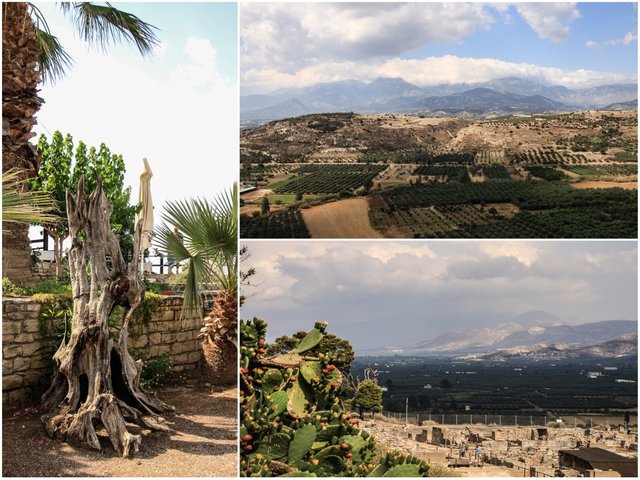
The skeleton of an old olive tree at the entry reminds us of the impermanence of all things.
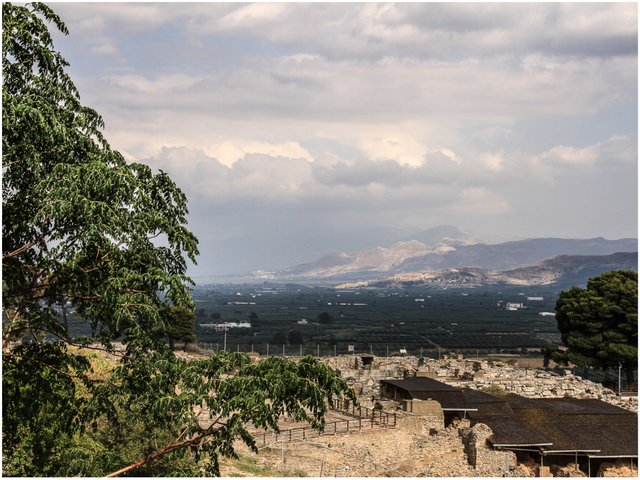
The view on the ruins from the tourist pavilion with the ample plains of Messara in the background.
From the entrance area we reach the large west court via a staircase. The west court was already built during the first stage of the city's construction and served as an important meeting place for the inhabitants of that time. I sat there for a while, trying to visualize how those inhabitants may have looked like, how they were dressed and what they were pursuing during an ordinary day of their live.
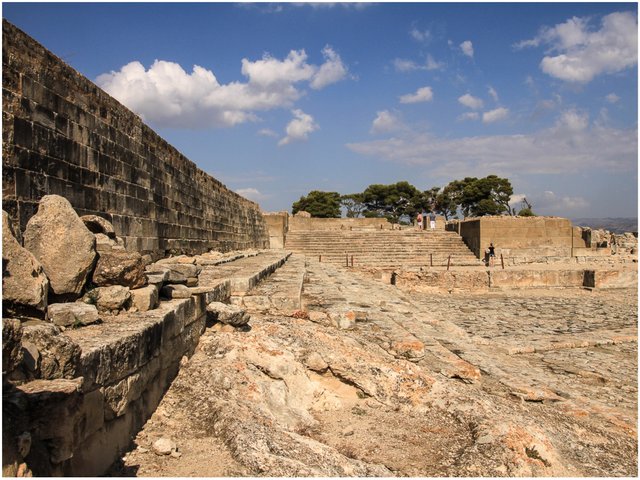
To the north, the court is bordered by a high wall with eight extensive stairway steps at it's foot.
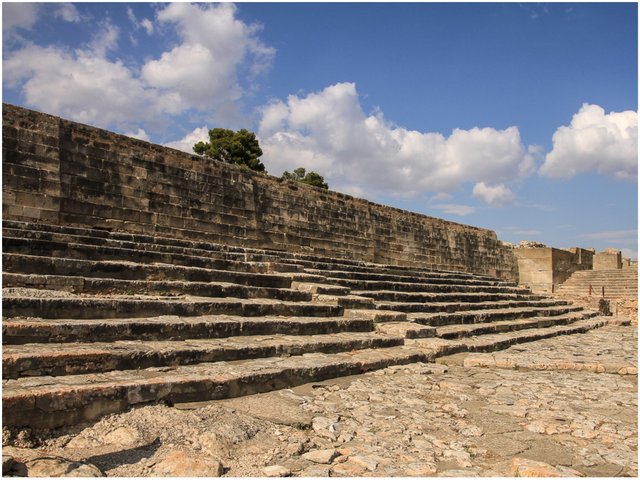
It is assumed that the inhabitants of the city had taken their place on these stairs to attend religious customs and festivities. The court has probably also been used as a theatre in more recent times.
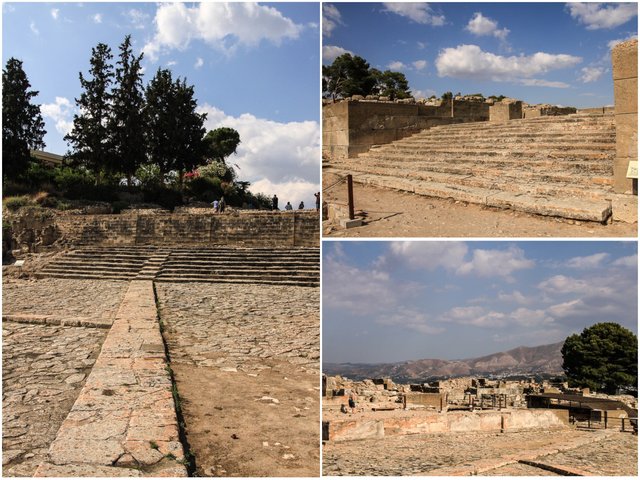
An elevated procession path leads across the court. The king's throne presumably stood at the end of this path.
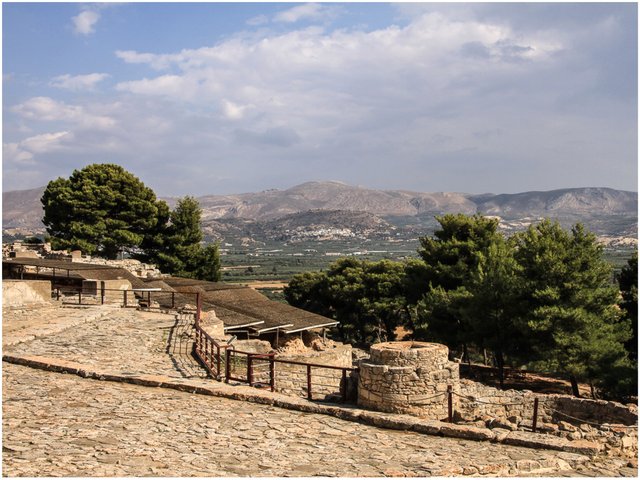
At the lower end of the west court there are several round constructions.
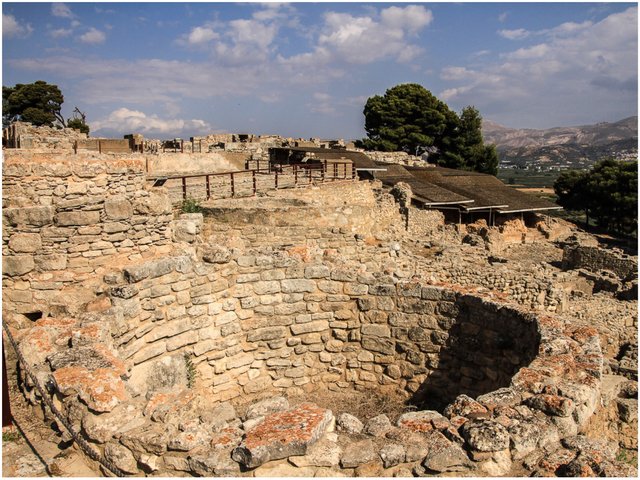
These circular pits were presumably used as grain silos to store the city's supplies.
In the next episode we will head towards the central courtyard, the very heart of the palace. I hope I can welcome you there again.
Until then, thanks for watching and enjoy your time on Steemit!
Shaka
All photos were recorded by myself with an EOS 7D / Tamron 18-270 mm in May, 2018. All rights reserved.
Discovering Crete - All previous posts:
 |
 |
| Part 1, Agiofárango, the Gorge of Saints I | Part 2, Agiofárango, the Gorge of Saints II |
 |
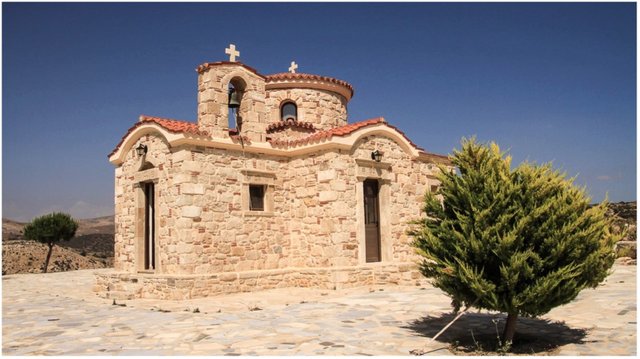 |
| Part 3, Monastery Odigítrias I | Part 4, Monastery Odigítrias II |

Literally this place is reflecting as Emptiness of ancient Civilisations. And yes nature is greatest teacher itself and that tree is giving truly the same message which you said as Nothing is permanent. And literally this place have something different essence and every stuff want to say it's own story which were hiding from decades. Sometimes these kind of places can give greatest lessons to us and we have to change our perception towards life to make our and everyone's life amazing.
Many Civilisations created greatest places to live but most of the time after some period of decades the whole Civilisations got vanished and in my opinion these kind of stories are common in many cases and these pictures are also saying that, now here only silence rules and day light and moon light comes and go.
Wishing you an great day and stay blessed. 🙂
Moin Shaka.. Das letzte Bild erinnert mich ein wenig an das hier:
Hahaha, sehr gut! 😂
:D
The view on the ruins from the tourist pavilion is outstandingly amazing
These men stored their grains in ground silos while we build it up in the sky nowadays. Isn't this beautiful?
These pictures are beautiful
This exploration is interesting to sit in that place and try to imagine how was your normal life could you imagine something?
It would be interesting to know a little of what these people did in their day to day and you as always good photographs I am waiting for more of this trip
It is not an easy thing for a person who have not read history to believe that man was able to construct so beautiful cities during Bronze age-a age when iron was not known to man. They did masonry work with just the tools made of bronze, which is very amazing!
Your post has taken us to the era when all this city was full of people. Also the place in the background is looking very beautiful and enhancing the beauty of photographs of this ancient ruins. I'll wait for the next episode.
Once again amazing captures @shaka
Exploring ancient Greek civilization Is really interesting. I hope your staying here is/was a unique experience!
Have a great day my friend!
Thanks! It was a a great experience indeed.
Auch der 5te Post dieser serie ist echt super. macht richtig Lust auf Kreta. mal sehen ob du mich am Ende soweit hast das ich buche! 😁
Das freut mich zu lesen :)
I really like the view from the top of the ruins, it was fabulous that you stopped to imagine its people, its actions, in a way you gave life back to those ruins.
Thanks! This place really invites to contemplate a bit about these ancient times.